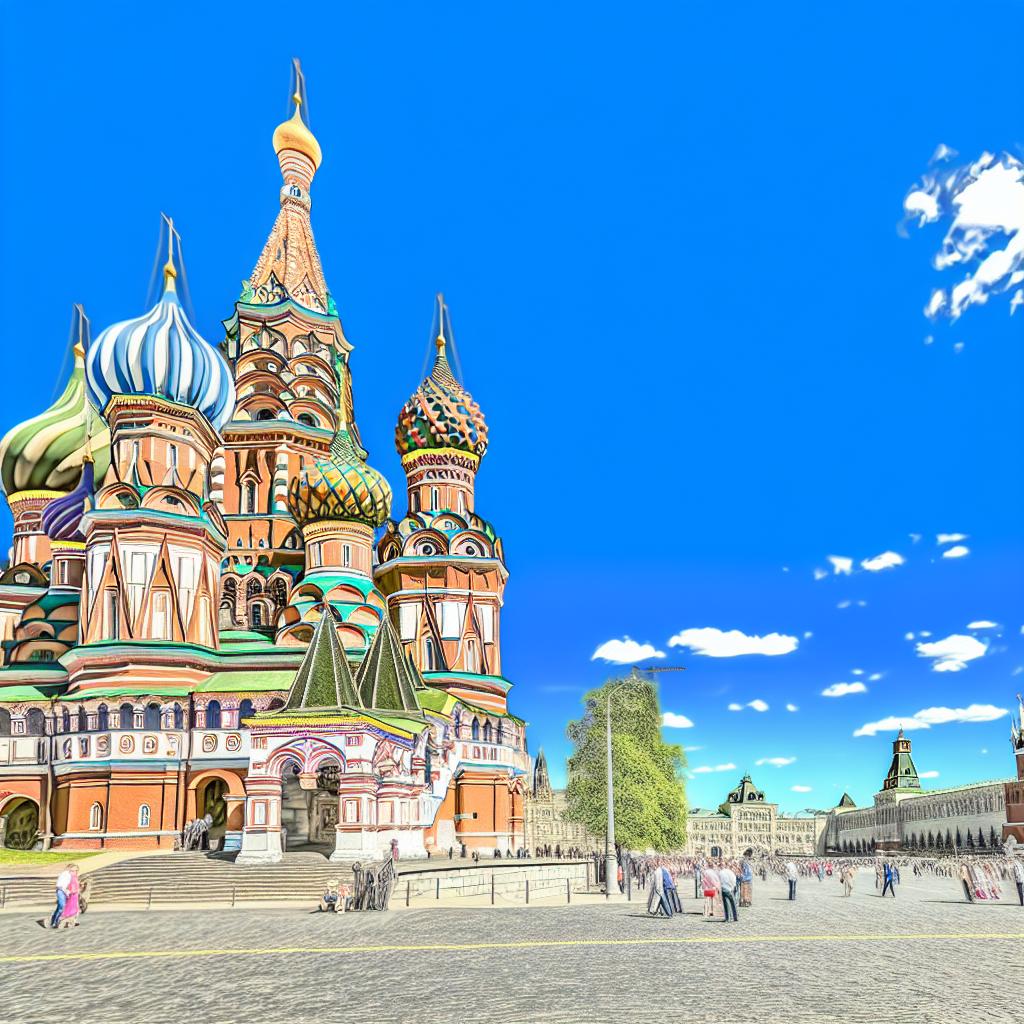Historical Background
St. Basil’s Cathedral holds a significant place in both the historical and cultural contexts of Russia. Officially known as the Cathedral of the Intercession of the Most Holy Theotokos on the Moat, this architectural masterpiece is located in Moscow, Russia, and has become one of the most recognizable symbols of Russian architecture and heritage. Commissioned by Ivan IV, also known as Ivan the Terrible, the cathedral was built to commemorate his military victories over the Khanates of Kazan and Astrakhan. Construction of the cathedral began in 1555 and was completed in 1561. These events marked a dramatic point in Russian history, reflecting the territorial expansion of the Tsardom of Russia and Ivan’s resolve to establish Moscow as a central power.
The years during which St. Basil’s Cathedral was constructed were a period of consolidation of power for Ivan IV. By capturing Kazan and Astrakhan, he not only expanded the territorial reach of Russia but also pushed the boundaries of cultural and religious influence. Commissioning such an extravagant monument was a way of both celebrating these achievements and exhibiting the grandeur of Ivan’s reign. Thus, the cathedral’s presence is deeply entwined with the story of Russia’s emerging national identity during the mid-16th century.
Architectural Features
St. Basil’s Cathedral stands out with its distinctive architectural features, which have fascinated scholars, tourists, and artists for centuries. The cathedral’s design is celebrated for its fusion of Byzantine and Russian architectural styles, representing the varied cultural influences that the region experienced during its history. This synthesis of styles is evident in the cathedral’s vibrant, vividly colored onion-shaped domes that have become its most iconic features.
The architectural complexity of St. Basil’s is embodied in its structure, which comprises nine individual chapels, each crowned with uniquely designed domes. These domes are not only an embodiment of artistic genius but also hold symbolic meanings, such as depicting a bonfire reaching upward into the heavens. Each of the domes has been designed to reflect different aspects of Russian Orthodox beliefs and are reminiscent of other Eastern Orthodox structures in their grandeur and spirituality.
The Central Church
The central church of St. Basil’s Cathedral is dedicated specifically to the Feast of the Intercession of the Theotokos, a biennial celebration in the Russian Orthodox Church. This central portion stands surrounded by eight smaller chapels, leading to a cohesive and symmetrical visual experience upon viewing the structure. This layout is not merely a feat of engineering but it also serves to represent the heavenly order and divine symmetry that the builders sought to emulate on earth.
Exterior Design
The exterior of St. Basil’s Cathedral is an eye-catching explosion of colors and intricate patterns, captivating any onlooker. The colorful brickwork combined with a deliberately elaborate color scheme creates a visual spectacle that is hard to overlook. The array of vibrant colors and swirling designs is believed to represent the Heavenly City as described in biblical texts, particularly in the Book of Revelation. This makes the cathedral not only a monument of architectural achievement but also a source of profound spiritual symbolism.
Location and Access
Nestled in the heart of Moscow, St. Basil’s Cathedral is strategically located on the famous Red Square, a space that holds immense historical and cultural importance within Russia. Its prominent position enhances its accessibility for both residents and visitors, who flock in great numbers to witness its beauty. The square itself is a vast, open area, providing the cathedral with a remarkable setting that accentuates its architectural magnificence. For those planning a visit, various local travel guides and official tourism websites offer in-depth details on access and amenities.
Preservation and Significance
Through the centuries, St. Basil’s Cathedral has been subjected to several restoration efforts, each aimed at preserving the integrity of its intricate design and majestic appearance. The cathedral’s significance has transcended its original religious function, becoming a profound symbol of Russian culture and history. Its unique aesthetic has led to its representation in countless photographs and artworks around the globe, marking it as an epitome of Russian architectural prowess.
The preservation efforts are a testament to the building’s enduring relevance and the cultural pride it inspires among the Russian people. These efforts continue today, with both national and international support, ensuring that the cathedral remains a vital part of Russia’s cultural heritage.
UNESCO World Heritage Site
St. Basil’s Cathedral was designated as a UNESCO World Heritage Site in 1990. This designation is an acknowledgement of the cathedral’s exceptional cultural and historical value, placing it amongst a global list of sites recognized for their importance to human heritage. The status ensures that ongoing efforts to preserve the cathedral remain a priority, allowing future generations to experience this magnificent structure and understand its role in shaping Russian—and indeed world—history.
For those interested in delving deeper into the history and ongoing preservation of this incredible monument, there are official resources available that provide detailed insights. These resources, such as the official site dedicated to Moscow’s historical landmarks, serve as educational tools for anyone eager to learn more about the historical backdrop, intricate designs, and the multifaceted significance of St. Basil’s Cathedral.

